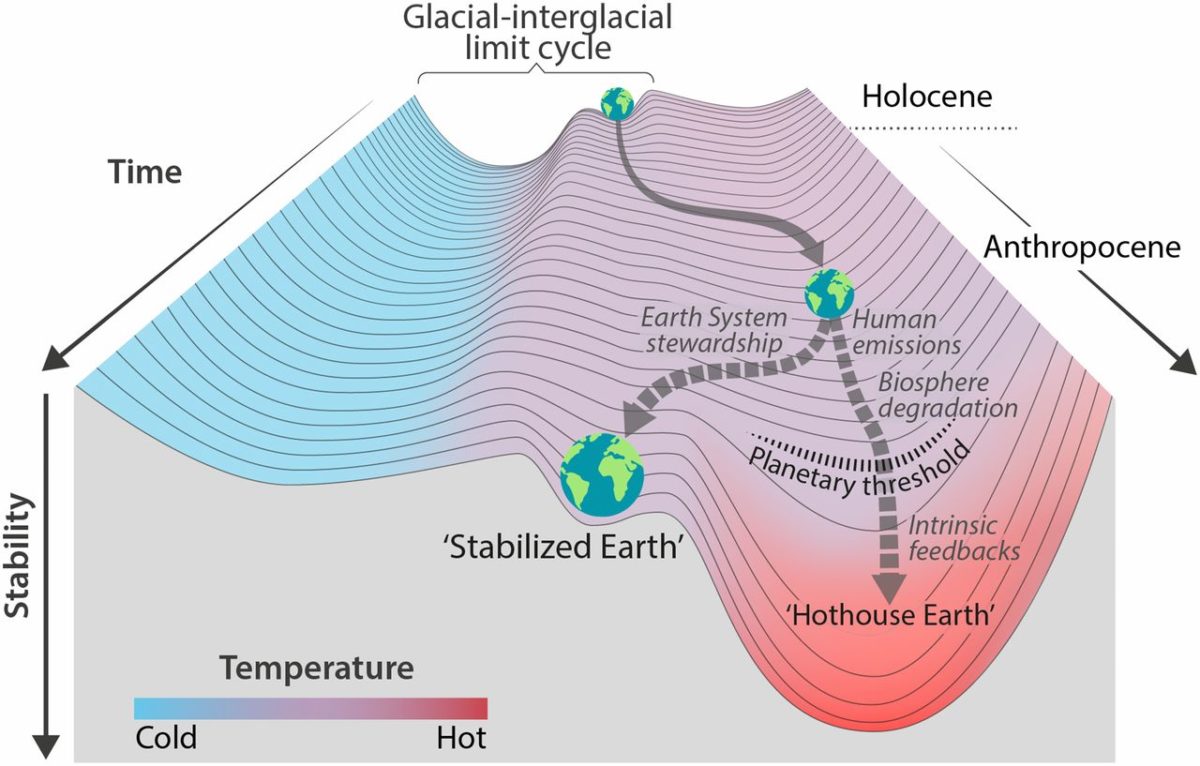Thawing permafrost in the Arctic warns we are probably crossing several critical tipping points on the road to runaway warming and near-term human extinction

Part 6 of David Spratt’s guidebook to events along the road to Hothouse Hell: Burning Siberian tundra, taiga forests and peat soils are all contributing to thawing permafrost and pushing greenhouse gas emissions past an important tipping point
Spratt focuses almost exclusively on the consequences of permafrost thawing without much consideration of the overall environment of which the thawing permafrost is only a part. Even looked at in isolation it is clear that greenhouse gases are being released sooner and in greater quantities that in earth system models and conservative IPCC reporting.
I spent several months last year researching the interacting dynamics of the 2020 Siberian wildfires (burning taiga forests, arctic tundra, and even the underlying peat soils) on the underlying permafrost and the likely impacts on greenhouse gas emissions from both the burning overburden and underlying permafrost. None of the modeling has the full complexities of the likely internal positive feedbacks within this permafrost system. In other words, although all authorities seem to accept that the Arctic permafrost is a dangerous threshold we could already be tripping over, I think most still badly underestimate the dangers it represents for flipping us past the point of no return on the road to Earth’s Hothouse Hell climate state and global mass extinction.

31 January 2022
Have tipping points already been passed for critical climate systems? (6) Permafrost: Beyond the models
by David Spratt in Climate Code Red
Sixth in a series.
Read 1 | 2 | 3 | 4 | 5 | 6 | 7
Permafrost is permanently frozen ground. It covers one-quarter of the land mass of the northern hemisphere, and contains 1.5 trillion tonnes of carbon, twice the amount currently in the atmosphere and triple the amount emitted by human activity since 1850. Permafrost buried beneath the Arctic Ocean holds 60 billion tons of methane (in structures known as methane clathrates) and 560 billion tons of organic carbon.
Permafrost is releasing significant amounts of greenhouse gases, and feedbacks are under way, but the dynamics are not yet well enough understood to be able to judge whether tipping points have been reached or not. As previously noted (in part 1 of this series), University of NSW researchers point out that: “We do not know exactly how close we are to a tipping point, or even whether we have already passed it… There are tipping points that while not yet triggered may already be fully committed to.”
As permafrost thaws, soil microbes awaken and feast on the warming biomass, creating heat as they do so: a positive feedback that drives more defrosting. Russian permafrost scientist Trofim Maximov describes the global feedback: thawing permafrost releases greenhouse gases which cause warmer temperatures, melting the permafrost further: “It’s a natural process… which means that, unlike purely anthropogenic processes, once it starts, you can’t really stop it.”
A 2018 study estimated that stabilisation of the climate at 2°C may eventually result in release of 225–345 gigatonnes (GtC) of thawed permafrost carbon. That is equivalent to two-to-three decades of human emissions at the current rate. Some scientists consider that 1.5°C appears to be something of a “tipping point” for extensive permafrost thaw.
Read the complete article….
If rapidly thawing permafrost doesn’t sound the alarm that shouts, ‘Your house is on fire. If you don’t put it out your house will be gone!’ I don’t know what does. Unfortunately, in Australia we are living in a country whose national government seems to be a troop of wooden-headed puppets and knaves working for the fossil fuel industry. Here they are doing everything possible to drown out, stifle, and misdirect the alarm so it either won’t be heard at all, or will at least be ignored by the citizens they are supposed to protect and keep safe.
If we continue to follow the lead these puppets are trolling us with, nothing will be done to stop and reverse global warming until we are irrevocably committed to the Hell the fossil fuel industry is tipping us into. Think of the future when you decide who to vote for (and place last in your list of preferences) in the upcoming election. Hopefully, you will give your top preferences to candidates who can be trusted to put action on the global climate emergency at the top of their to do list if elected, and puppets of the fossil fuel and related special interests at the bottom of your list.
To help you, we are making available what we know about each candidate via our electorate specific Traffic Light Voting System.